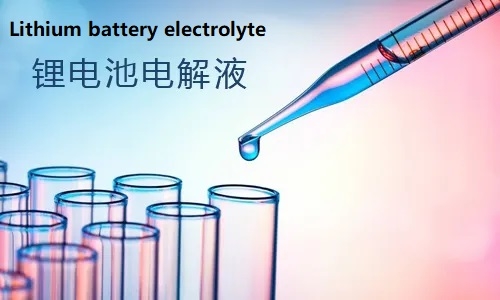The liquid lithium battery is mainly composed of four major parts: positive electrode material, negative electrode material, diaphragm, and electrolyte. The electrolyte is mainly responsible for conducting conductive ions between the positive and negative electrodes, which affects the energy density, cycle life, power density, and safety performance of the battery. , wide temperature applications, etc. will play a key role, known as the “blood of the battery”.

In the application of batteries, the electrolyte needs to meet the performance indicators such as high electrical conductivity, good thermal stability, high chemical stability, wide electrochemical window, wide operating temperature range, and good safety. So, what are the main components of the lithium battery electrolyte?
The main components of the lithium battery electrolyte are raw materials such as solvents, solutes and additives, which are prepared in proportion and under certain conditions. The quality proportions of the three raw materials are 80%-85%, 10%-12%, 3%-5%, and the cost proportions are 25%-30%, 40%-50%, and 10%-30%, respectively.
1. Solvent: mainly used as a transport carrier for lithium ions, commonly used carbonate solvents, including propylene carbonate (PC), ethylene carbonate (EC), diethyl carbonate (DEC), dimethyl carbonate (DMC) , ethyl methyl carbonate (EMC), etc. When used, high and low viscosity solvents are generally mixed, and the common combinations are EC+DEC, EC+DMC, EC+DMC+EMC, EC+DMC+DEC, etc.
2. Solute: As the provider of lithium ions, lithium tetrafluoroborate (LiBF4), lithium hexafluorophosphate (LiPF6), new lithium salt lithium bisfluorosulfonimide (LiFSI) are generally used.
3. Additives: Substances with specific functions. The electrolyte generally contains a variety of additives. According to their functions, they are divided into film-forming additives, high/low temperature additives, overcharge protection additives, flame retardant additives, and rate additives. Common ones are vinylene carbonate (VC) and fluoroethylene carbonate (FEC).